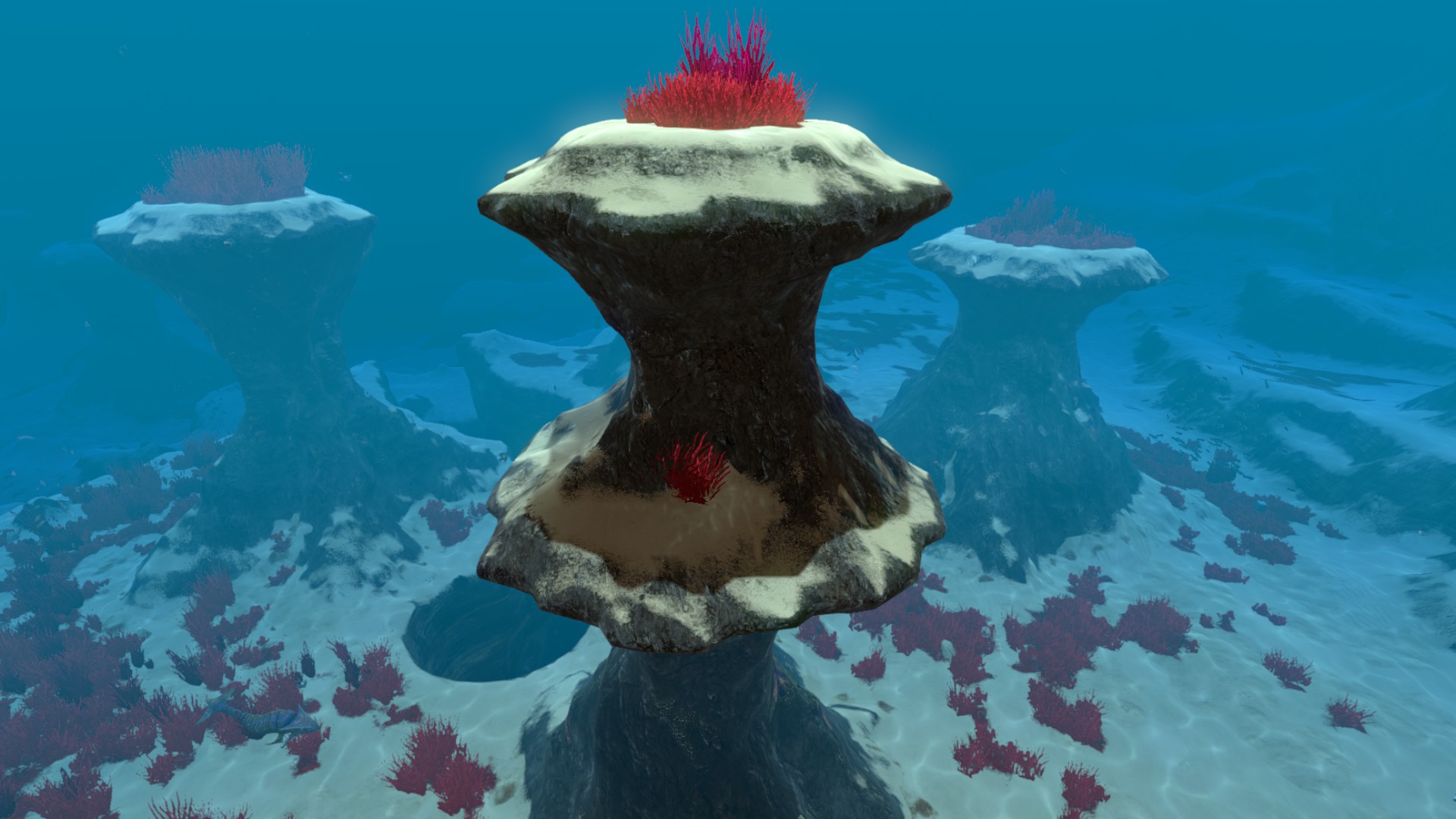About the pillars in the grassy plateaus...
Darwin-Evolution France Join Date: 2015-06-07 Member: 205310Members
France Join Date: 2015-06-07 Member: 205310Members
 France Join Date: 2015-06-07 Member: 205310Members
France Join Date: 2015-06-07 Member: 205310Members


Comments
This thread is focusing on the pillars of the grassy plateaus, which I find curious.
I know that is quite a unlikely theory but that was all I could think of.
Alternatively, if the sea level were once much lower, and those pillars were exposed to the air, then they could have been formed by normal eroding factors like wind and rain. There are many similar pillars on Earth in desert and mountain regions like the American southwest. If the rock is stratified, then the thinner sections of the pillars could represent softer rock strata that erode more easily.
Just my $0.02.
J
The ones in subnautica are rather stylized, and have some features that don't make a whole lot of sense (how does that sand stay on top?!?!) but are recognizably formed by the same process. A far stranger geological oddity is that thermal vents on the underwater islands.....
Or Is That Just me?
Not too many loose boulders on the seafloor, so the Floaters start chewing on these columns to obtain their raw material.
Maybe the same way these were made. Small eruptions that cooled quickly from flooding caused by an introduction of green house gasses from the eruptions. The center is hard stone. The surrounding terrain is soft, and eroded quickly, leaving only the hard core to stand for the rest of eternity.
@sayerulz I've already solved that one here.
Yes, I saw that myself. But that connecting bit is TINY. And one way or another, it is very odd.
This would also explain how all the islands were created in the first place. Just like intense heat at the bottom of the atlantic is creating new earth to push two continents away, the intense heat at the sea floor under the islands must be constantly creating new light rock which it eventually gets rid of when it gets too infested with giant floaters. As time goes, erosion causes the islands to become smaller and smaller untill they're gone, and new ones are formed by the heat in the sea floor below. That's the life cycle of the floating islands.